

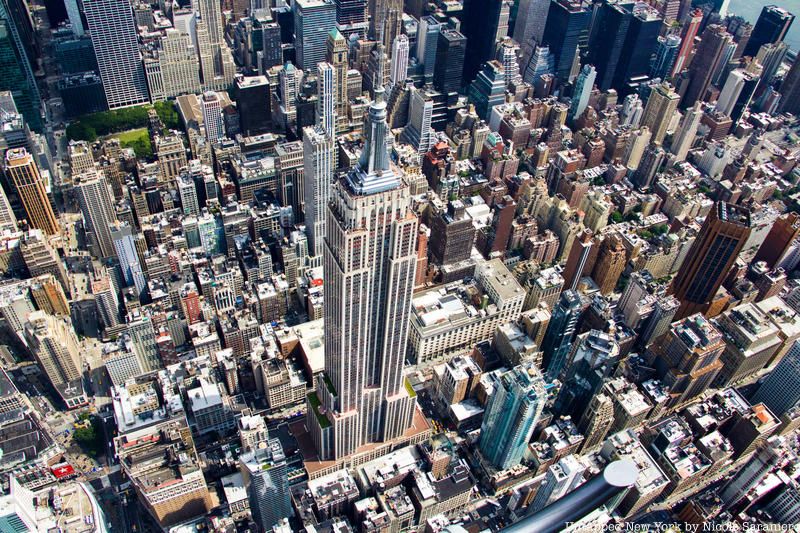
Even the Empire State Building. one of the world’s most famous buildings has its secrets. We were recently treated to a truly behind-the-scenes tour of the iconic skyscraper, the tallest building in New York City for 40 years, and are excited to share with you the fascinating things we discovered.
Star tour guide at the Empire State Building, Siobhan MacShane, who has worked there for over 17 years took us around everywhere from the top of the famous observatories to the spaces deep below ground. We discovered meeting her that she’s a longtime fan of Untapped New York, and with her history degree from the City University of New York, we’re not surprised! Despite her vast knowledge of and passion for the Empire State Building, Siobhan is incredibly humble, explaining that “Believe it or not, I’ve actually worked here the least” out of most of her colleagues, many who have been with the building over 20 years.
1. There’s a Decommissioned 103rd Floor Observation Deck
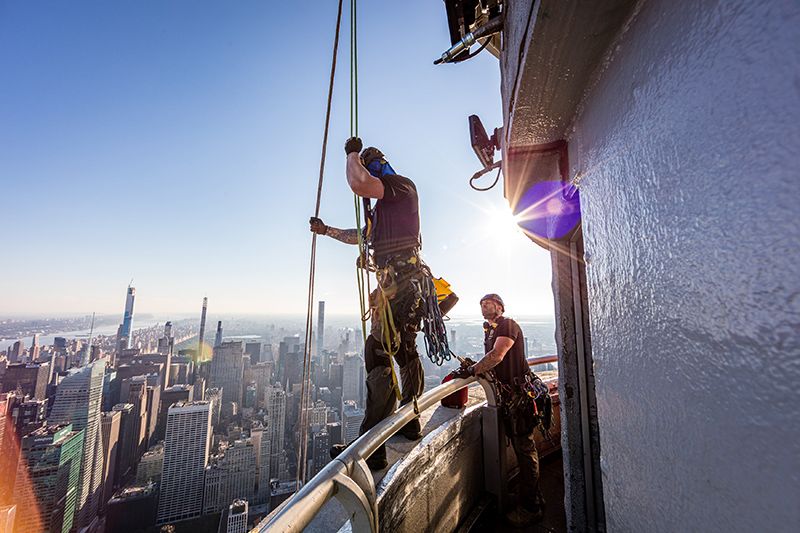
The 86th floor and 102nd floor observation decks of the Empire State Building are accessible but there’s a 103rd floor observation deck that’s still closed off. There’s a “celebrity balcony” on this 103rd floor that forms a ring around the mooring mast, on top of which the spire begins.
The 103rd floor was recently used in the restoration efforts on the original mooring mast, which included the restoration of the Art Deco sculptural aluminum wings and multi-story illuminated glazed lantern, along with the removal of obsolete antennas.
2. The Empire State Building was one of the Fastest Skyscrapers Built
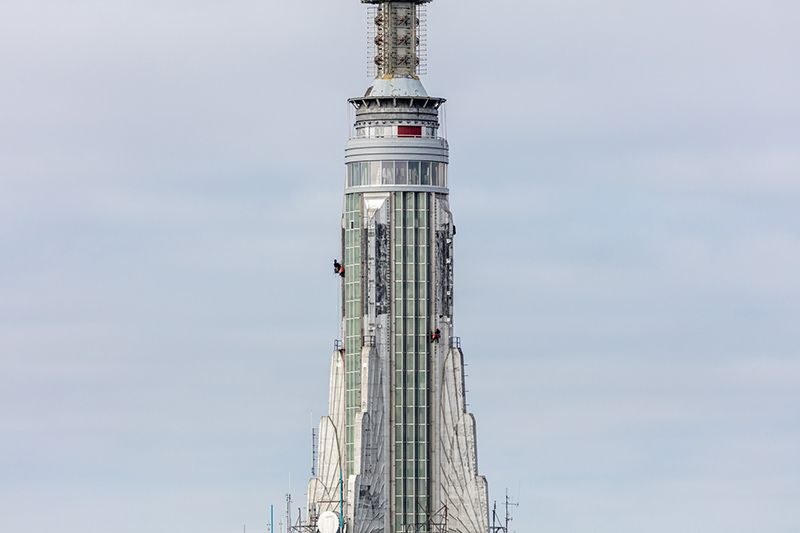
Built atop the original Waldorf-Astoria hotel, the Empire State Building opened on March 31, 1931 and took only one year and 45 days to build, rising at 4 1/2 floors per week. According to the Empire State Building team, “This is the fastest construction to date for a project of its scale.” It even came in at a cost $1 million under budget! “Under budget and ahead of schedule, that never happens today,” joked Siobhan. In 1931, tickets to the observatories cost $1 ($17.43 in today’s dollars), the most expensive observation deck in the city at the time.
In the new museum inside the Empire State Building, you can see the original blueprints and sketches of the building, intended from the beginning to be the world’s tallest building. Siobhan says that John Jakob Raskob, a General Motors and DuPont executive who had the idea to build the Empire State Building, only had one directive for his architects, the firm of Shreve, Lamb & Harmon: to build as high as they could without the building falling over. Shreve, Lamb & Harmon originally modeled the Empire State after a building they had designed for North Carolina, but competition from the Chrysler Building led to the addition of a “hat” (now known as the mast) and spire. Inside the museum, you can also experience interactive historical exhibitions about the building’s engineering feats, as well as see some great archival objects including the original survey marker that was used.
Another fun fact Siobhan shared with us is that the skyscraper’s “setbacks were intended to be green spaces back in 1931 when we opened up the building, and because of the economy at the time — we were in the heart of the Depression — they never really utilized that but things always come full circle. You know almost 90 years later and everything is being used as it was intended.”
3. The Docking of Blimps — Did It Happen?
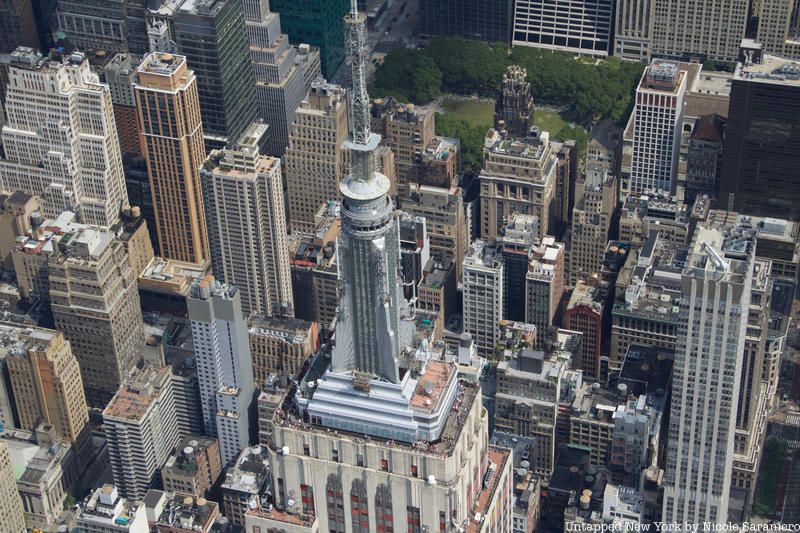
It’s a common misconception that there was a docking station at the top of the Empire State Building for blimps and zeppelins. Siobhan tells us that Raskob and his team did have intentions to include a docking station at the top, but the engineers told them that it was “the worst idea they’d ever heard.” Nonetheless, the engineers followed the directive and tested the docking of a blimp twice. Siobhan says those tests took place “once before we were open and then again another time when it was beautiful blue skies. It was a failure both times. We never successfully docked people into the top of the Empire State Building.”
In 2010, the New York Times also reported that the although the plan for a docking station was real, the docking of an airship, including these famous photographs of the docking didn’t fully occur and that the famous photo above is a “composite, a fake.” But a Navy airship hovered around the tower amidst treacherous winds at the request of a newsreel company.
4. See the Last Original Elevator
Inside the museum at the Empire State Building, you can step into the last original Otis elevator from the 1931 construction. It was in use until 2017, taking people from the 86th floor observatory to the 102nd observatory. The relay controller for the elevator was taken out and is on display, along with the mechanics atop of the car. The cab itself is made of elements from the original elevator — like the display panels — and mixed with mock elements.
When the Empire State Building was built, it had the fastest elevators in the world moving at 800 feet per minute up and down seven miles of elevator shafts. The law in New York City at the time stipulated that elevators could not exceed speeds of 600 feet per minute, so the regulation had to be overturned just for the Empire State Building. Otis was hired again for the recent renovation of the Empire State Building, and installed new elevators that are 50 to 75% more efficient than the original using a technology that captures energy that would be wasted as heat, and returns it to the building’s power grid.
5. What the Lights on the Empire State Building Mean
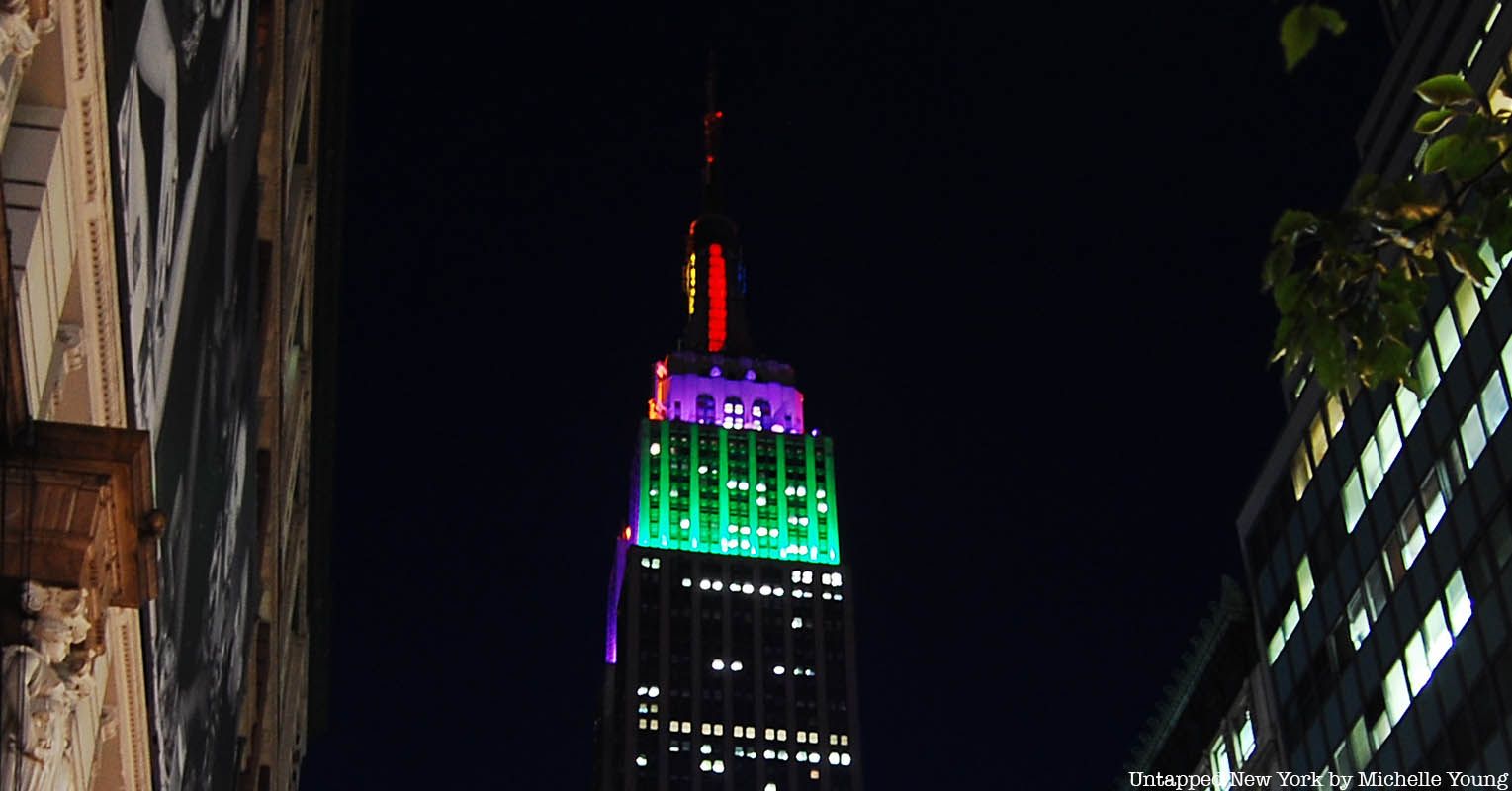
The lights on the Empire State Building can represent anything from a holiday, to a charity, to a tribute, a social movement, and more. The first light to shine atop the Empire State Building was a beacon that announced Franklin Delano Roosevelt had been elected President of the United States in November 1932. In 1964, floodlights were added in nine colors and in November 2012, the tower got a major upgrade. The original floodlights were replaced with 1200 LED lights bringing the ESP over 16 million color possibilities!
While the public can’t determine the colors of the spire, unlike if you have the secret app for the spires of One Bryant Park or 4 Times Square, the Empire State Building’s lights are changed frequently, making it a fun thing to look for. Just this past Saturday, the building put on a white sparkle with the rotating number 90 to celebrate its anniversary, and it will turn magenta on Thursday for Teacher Appreciation Week and Blue and Yellow next Sunday in honor of Europe Day. In the last year, the Empire State Building has lit up in appreciation of New Yorkers during the pandemic, pulsed in red for frontline workers, and turned red and white to celebrate the NYPL’s 125th anniversary. You can see the calendar of spire colors on the Empire State Building website.
An environmental note: New York City Audubon sponsors the dimming of at least half a dozen skyscrapers during migration season. During bird migration season, the lights are turned off at midnight to prevent birds from crashing into the building — an action New York Audubon sponsors for over a dozen New York City buildings.
6. There’s an Abandoned Bank Vault
35 feet below underground, you’ll find the operations side of the Empire State Building in the basement. It’s the “heart of the building” Siobhan declares, “It’s like a city within a city.” Within this level contains the electricians, the steam plant (more on that later), the locksmith, the laundry and dry cleaning facility, the carpenters and more.
Amidst large storage units in this basement level is what’s left of a bank vault that belonged to the bank that originally rented out the entire second floor of the building. The bank requested that the bank vault be added in — a stipulation the Empire State Building was ready to acquiesce to as tenants were in demand during the Great Depression. (The bank isn’t a tenant anymore but the building has one original tenant still in operation, Empire Diamonds!)
The steel ceilings of the bank vault still exist but the safe deposit boxes were taken out in the late ’90s. The vault is “so heavy and really essentially part of the building now, says Siobhan, “That’s one of the reasons why it’s still here.” There’s an elevator that was installed just for access to the vault, which goes from this level to the second floor bank level (and a stop in the lobby) so that bank employees “wouldn’t have to take public elevators.”
7. There are Wind Tunnels and a River Below the Basement
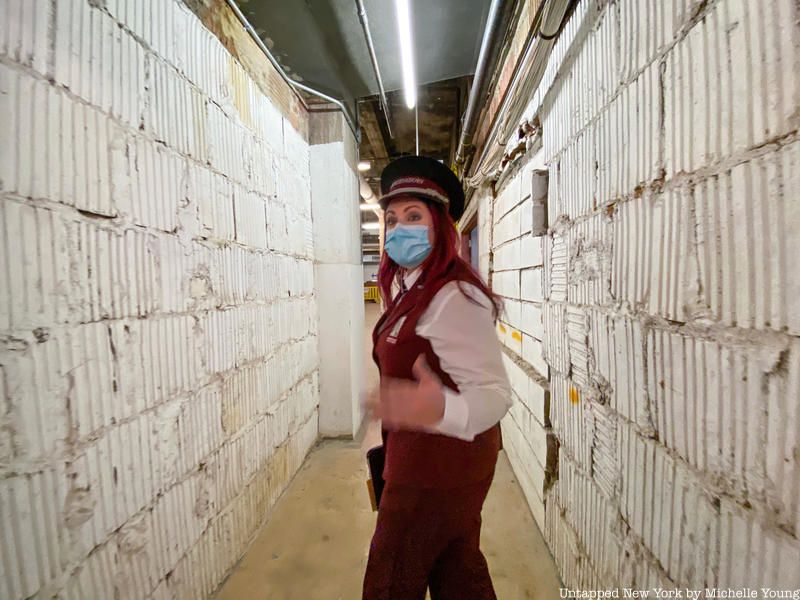
A fascinating secret is that below the basement level of the Empire State Building are wind tunnels.! “They were meant to and still recycle plain air into the lower level,” explains Siobhan. Sometimes water gets into the wind tunnels but Siobhan says, they aren’t from what people sometimes think it’s from….
Even further below the wind tunnels is a river that runs below the Empire State Building, “very, very deep down,” says Siobhan. It’s one of the city’s many buried streams and rivers, moved underground for the onward march of development.
8. The Empire State Building Has Its Own Steam Power Plant
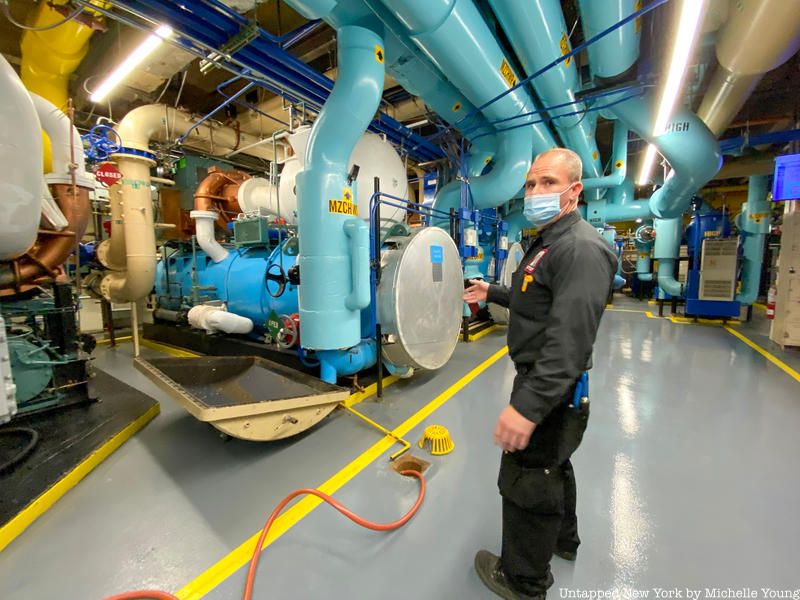
Steam is supplied by Con Edison below ground to the Empire State Building and the plant inside uses the steam to produce heat and air conditioning. One room down here is known as the “watch station,” where the engineers monitor the pressure and water levels in the system.
The engineers have an important job, and the pride in their work is clear from our interaction with them. Siobhan says what happens down here is, “very important, especially when it gets cold when we have the first deep freeze — 90 year old pipes, a lot of them, over 60 miles of pipe throughout this building so they have a big job on their hands.”
9. There’s a Celebrity Green Room
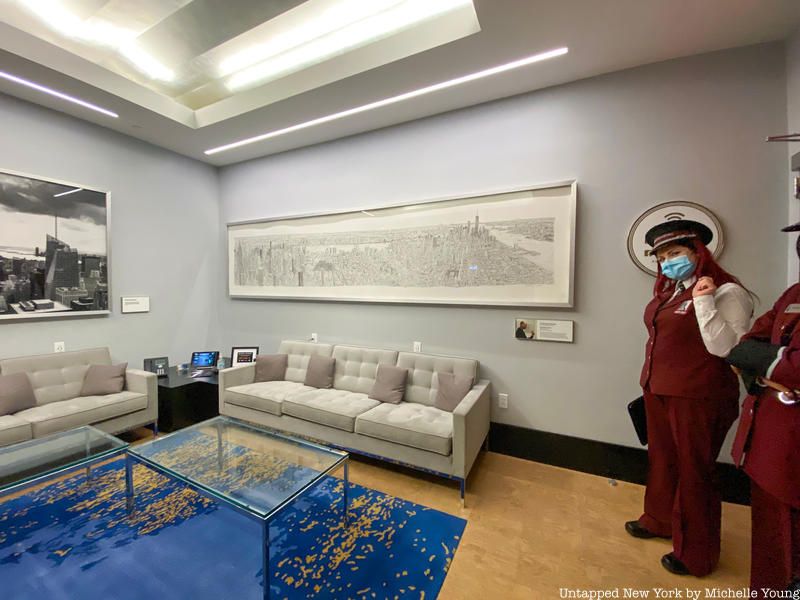
A “green room” is usually found in television studios or theaters — a place where performers and guests can get ready and lounge before an appearance. But there’s also one in the Empire State Building! The only way to see it is if you’re a celebrity coming for an event or a lighting ceremony at the building or on the Empire State Building’s All-Access Tour. The lighting ceremony spot is in the lobby of the Empire State Building so lucky visitors may get to see someone like Drew Barrymore or others pull the lever to turn on the lights, “if they happen to just walk in at the right time,” says Siobhan.
Inside the green room, there is an original drawing by Steven Wilshire, the autistic British artist who can draw a cityscape in tremendous detail — down to building windows — by memory. In 2017, he spent five days recreating what he saw from a 45 minute helicopter ride over New York City at an event on the 80th floor of the Empire State Building.
10. A Plane Once Crashed into the Empire State Building
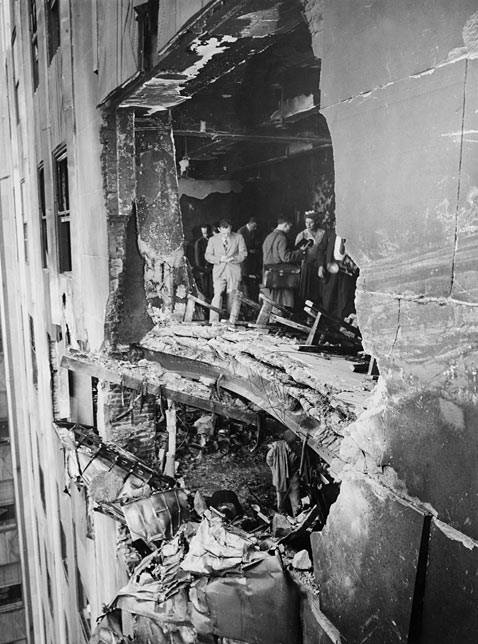
On a foggy morning in July 1945, a pilot flying lower than usual to regain visibility dodged most of the New York City skyline but failed to swerve around the 79th floor of the Empire State Building. The pilot didn’t only create a hole 18 feet wide and 20 feet high – because the fuel tank exploded, flames hurdled through the stairs and the hallways down to the 75th floor killing 14 and injuring 26. Luckily, the building was repairable but it did cost $1 million. Read about 5 more architectural accidents in NYC.
Another note relevant to to the current pandemic. The Empire State Building was the first observatory to reopen in New York City, in part due to the air filtration system that was built into the last renovation. Merv 13 filters and AtmosAir air purifying solutions which filters out the air on a rapid schedule.
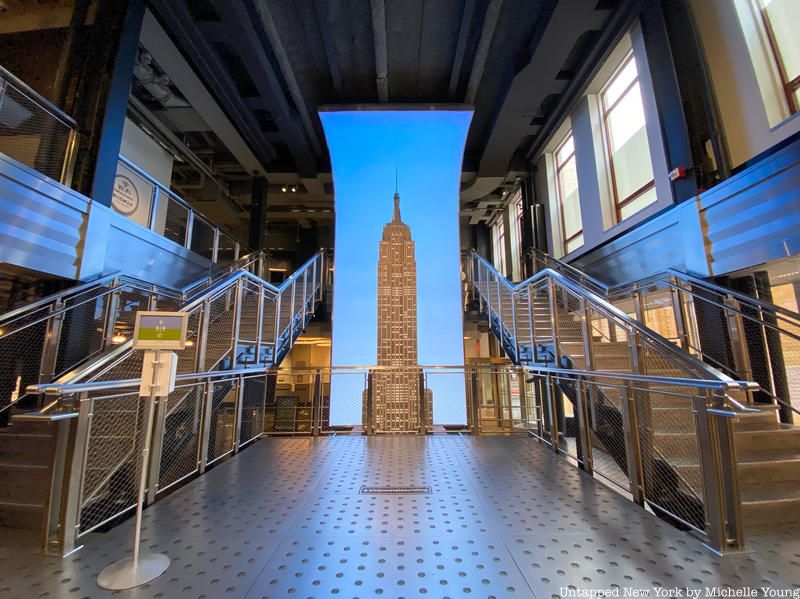
Another cool thing to look for besides the beautiful views from the observatories: in the lobby, a scale model shows “every last detail of the building,” says Siobhan, including the framing around all 6500 windows in the building, guests shown on the observatories, the green terraces that tenants have access to, and more. Siobhan tells us that the model was being glued at 6:30 AM the morning that the new lobby and the new museum were opened to the public in July 2019 and that “it all came down to the model and getting it open.”
We’re also a big fan of the King Kong windows!
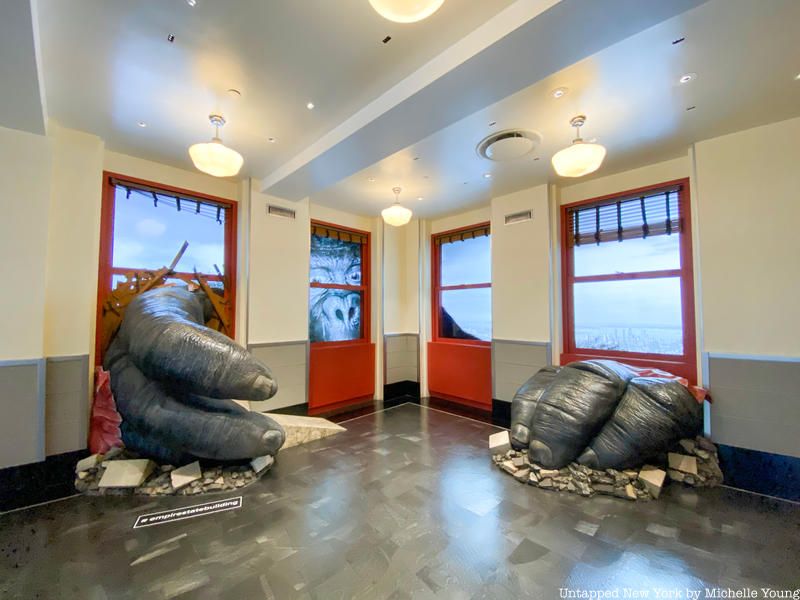
Next, check out the Secrets of the Chrysler Building.


